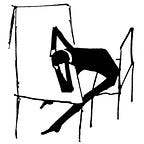Turin Erotic Papyrus: The World’s First Men Playboy
A papyrus depicting a brothel in ancient Egypt
The papyrus in the full form below. User discretion is required.
The Papyrus
The Turin Erotica dates from the New Kingdom in ancient Egypt about 3150 years ago and although it surely isn’t the first representation of sexual acts it has been dubbed the world’s first man magazine. Its contents could be shocking for people even today and it surely is one of the most explicit sex scenes that we have recovered from antiquity.
Since its discovery, it underwent a lengthy period of censorship. During the Victorian era, women were banned from looking at it and even men had to get explicit permission with a very good reason behind it in order to take a peek.
The papyrus was discovered in the 19th century near the valley of the kings within a fragile pot and in very bad shape. Researchers have however since managed to fully rebuild it. Its content is exhilarating: The papyrus depicts a set of 12 ordinary men and women engaging in all sorts of sexual positions.
It is indeed true that we find explicit sex scenes portrayed in different forms of art throughout antiquity but none even comes close to matching such overt portrayal as we find in this papyrus. Very simply put, it's a papyrus full of pornography!
The Turin Erotica was found in what is now known to have been the housing of ordinary workers who build the valley of the kings. These workers had a 10-day work schedule and then they’d go back to their families. So, as the most probable theory goes, the papyrus could potentially describe the release of accumulated sexual tension once these workers finally met their women. In other words, this could be a depiction of the perfect sex scene that you get after a 10-day work week.
Its focus is elderly men copulating with very young and beautiful Egyptian women. The scenes are multifarious. In one of them, the act is being performed on top of a chariot while the man pulls the women’s hair, which was a very erotic part of the body for the ancient Egyptians.
You can tell by the lotus flower on top of each woman that they are high on drugs. We can also see alcohol and music incorporated in the scenes. Music, alcohol, and drugs were pretty important in ancient Egyptian‘s sexual life. In short: people were having fun then as they are today!
One image towards the right part of the papyrus shows a woman pleasuring herself on an ancient pot (amphora), while also painting the lips (another intense sexual symbol in ancient Egypt) with the help of a mirror that she’s holding with the other hand. The woman seems to be talking to the old man close to her as we can tell by the text written there.
She says to him: “You give me nothing so I have to resort to this.”
She then calls for him: “Come here you dirty sex criminal”.
The man seems to be enjoying this moment as evidenced by his hugely erected phallus.
A Possible Explanation
Turin Erotica’s purpose has been long debated by scholars. There are basically three main theories:
The papyrus depicts the sex lives of the gods (very unlikely)
It should first be noted that ancient Egyptians are extremely symbolic when it comes to sex. The Greeks and the Romans have a reputation for being lustful and pretty overt about it. However, when first approached the sex life of ancient Egypt appears to be shrouded in mystery. A symbolic interpretation, on the other hand often shows it to be rife in sexual expressions if not more abundant than the latter civilizations in certain cases as is clear with the Turin Erotica papyrus for instance.
Ancient Egyptians believed that the Gods created the world by having sex. Thus sexuality had paramount importance in their culture and so much so that their society could not function without it. And the papyrus certainly has some symbols referring to the Gods. However, this appears to be an unlikely interpretation as the 12 couples portrayed in the papyrus appear to be ordinary men and women.
The papyrus is part of an elaborate ritual of conception or rebirth (unlikely)
For an ancient Egyptian it was of utmost importance that one was a very sexually active creature. As already mentioned, the Gods themselves created the world by engaging in coitus while taking great delight in the act.
Central to Egyptian culture was the idea of rebirth. Thus tombs served as a sort of portal as the body transitioned to the afterlife. Crucial to the idea of rebirth is the sexual act itself as you are starting a new life elsewhere. In order to be reborn, you have to have the sexual activities that go before any birth. Therefore sex was central to rebirth in the afterlife.
And again the papyrus contains such symbols but still, the idea of having made it for purely ritual purposes sounds a bit far-fetched.
It is simply an ancient version of a pornographic magazine (most likely)
The widely accepted theory is that this papyrus brings to us the human all too human aspects of the Egyptian culture, far away from their greatest accomplishments like the Pyramids or the magical rituals and mummification process.
As already mentioned above, the papyrus could be a depiction of the workers that build the king’s valley. Some scholars have even suggested that we are looking at some sort of ancient brothel here.
One thing is for sure: Turin Erotica allows us to decode the real Egyptian sexuality and scholars cherish it as a very important piece of papyrus on the topic to date.
